5 Days 4 Nights
Daily Tour
50 people
___
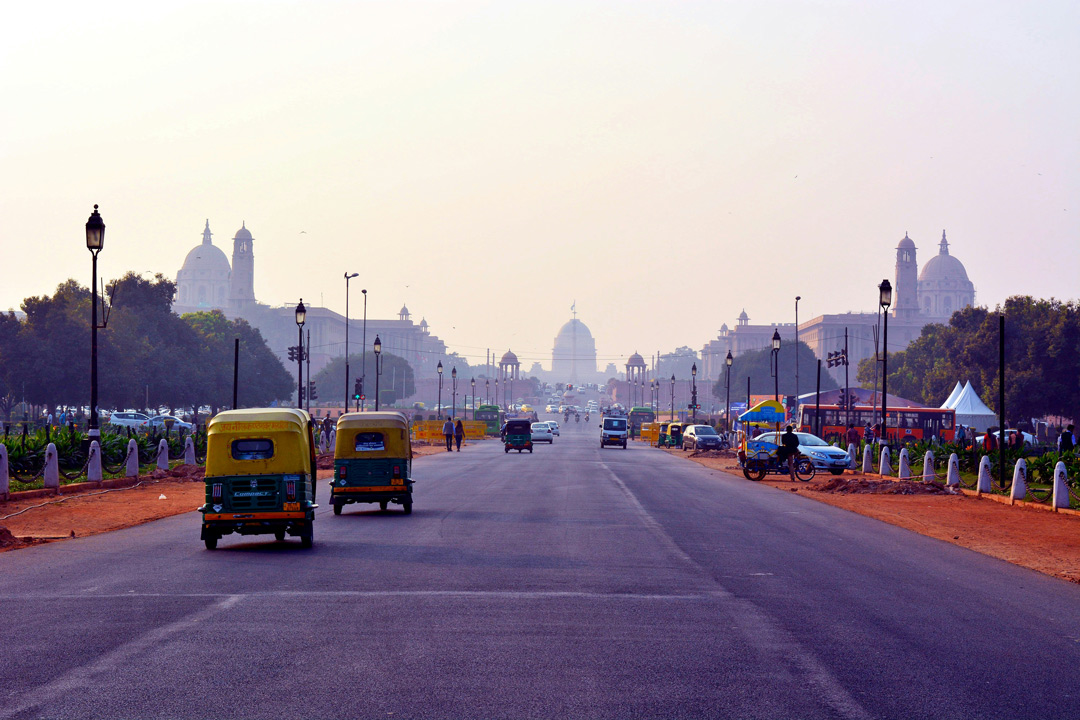
Dist: 529 km | Time: 12 to 16 hr | Altitude: 300 m to 2050 m
Your journey will start in Delhi and end in Manali. After 10 to 16 hours, you will reach Manali the following day. The place is blessed with natural beauty, and the scenic landscapes will fill your heart and mind with peace.
Meals: Nil
Night: Journey by Volvo Bus or Cab

Check-In: 11:00 am | Sightseeing: 2:00 pm to 6:00 pm
You will reach Manali and check in to the hotel in the morning. After freshening up and resting, you can visit Mall Road, Hadimba temple, Van Vihar, Old Manali, and the clubhouse in the evening.
Meals: Dinner
Night: Stay at Hotel in Manali
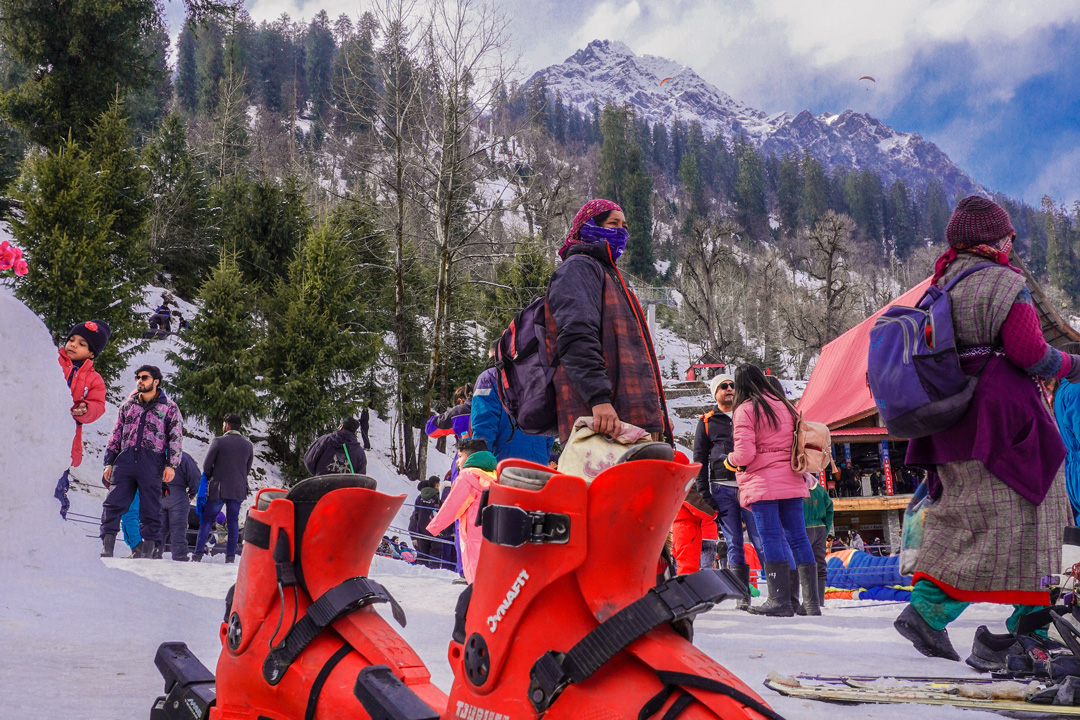
Sightseeing Time: 10:00 am to 6:00 pm
After breakfast, you will depart for Solang Valley, where you can enjoy adventure activities like ziplining, Paragliding, Skiing, etc. You will visit Vashisht Temple and Jogini Waterfall on the way back to the hotel.
Meals: Breakfast and Dinner
Night: Stay at Hotel in Manali
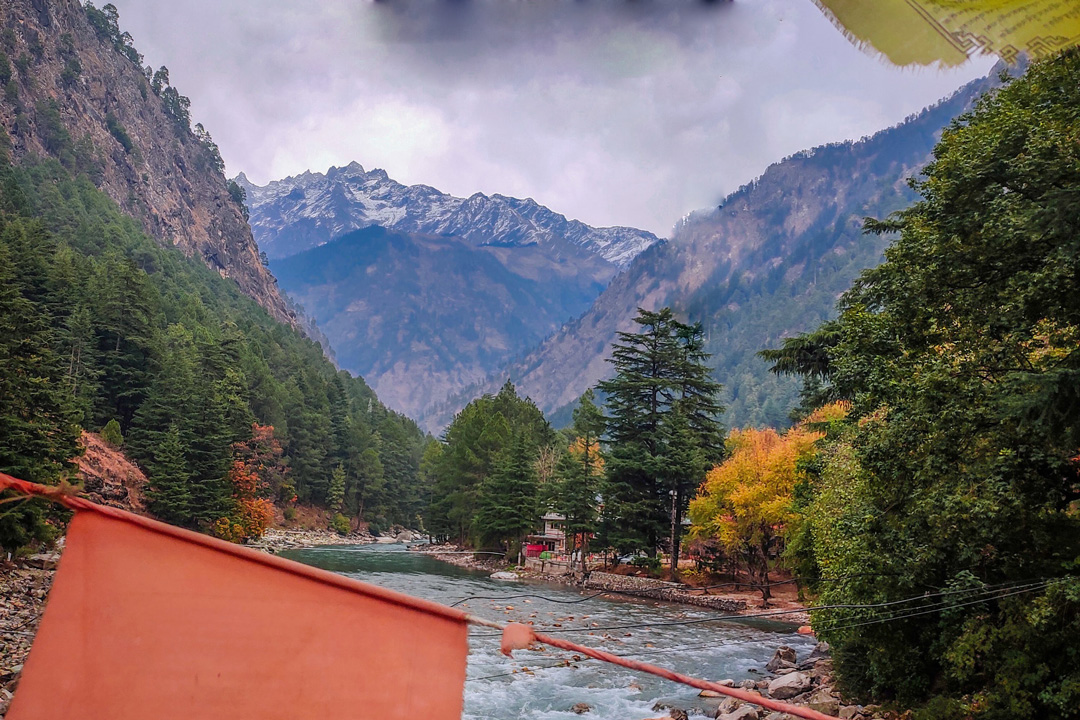
Dist: 81 km | Time: 2 to 4 hr | Altitude: 2050 m to 1580 m
Today, you can enjoy the morning at Manali and visit any missed places. You can also try the local cuisine of Himachal and explore local markets. Later in the evening, you will depart for Kasol.
Meals: Breakfast, Dinner
Night: Stay at the Hotel in Kasol
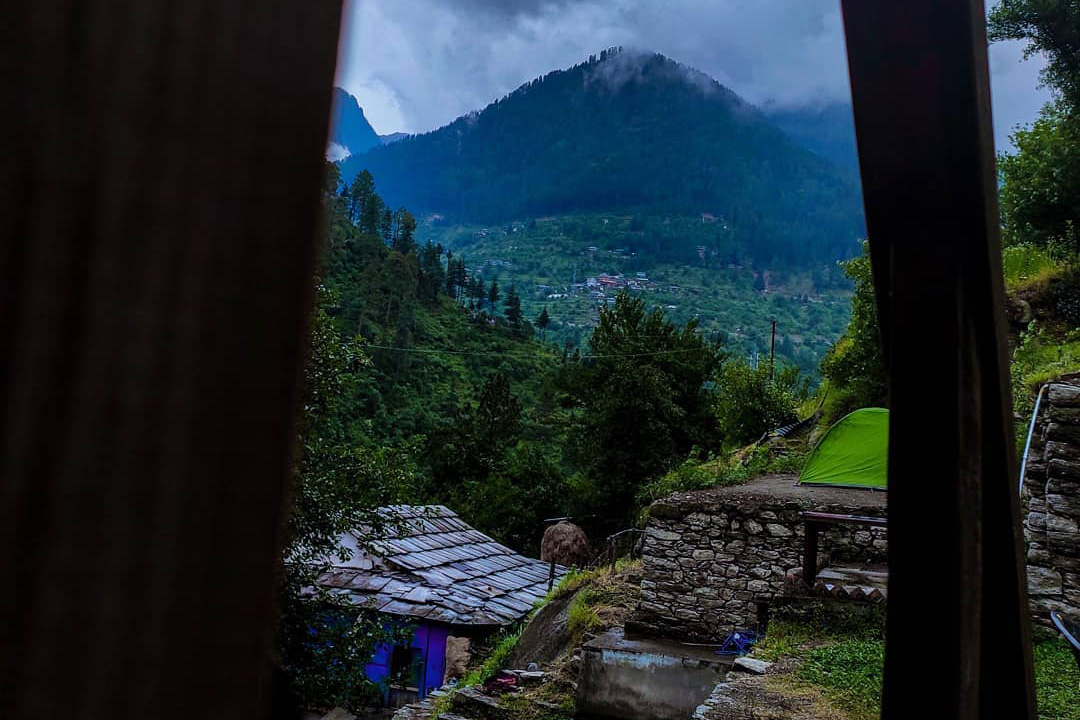
Dist: 81 km | Time: 3 to 4 hr | Altitude: 1580 m to 1900 m
Today, after breakfast, you will check out of the hotel and will drive towards Jibhi. After reaching Jibhi, you will check into the hotel and go on an excursion to Chhoie waterfall.
Meals: Breakfast, Dinner
Night: Stay at Hotel/Homestay/Campsite in Tirthan

Dist: 36 km (cab) | 12km (Trek to Serolsar) | 6km (Trek to Raghupur)
After breakfast, you will visit the Jibhi Valley and Jalori Pass, where you can trek to Serolsar Lake or Raghupur Fort. The Serolsar Lake trek takes about 6-7 hours, while the Raghupur Fort trek takes around 3-5 hours. After exploring these sites, you will return to Tirthan in the evening.
Meals: Breakfast
Night: Overnight Journey by Bus/Cab
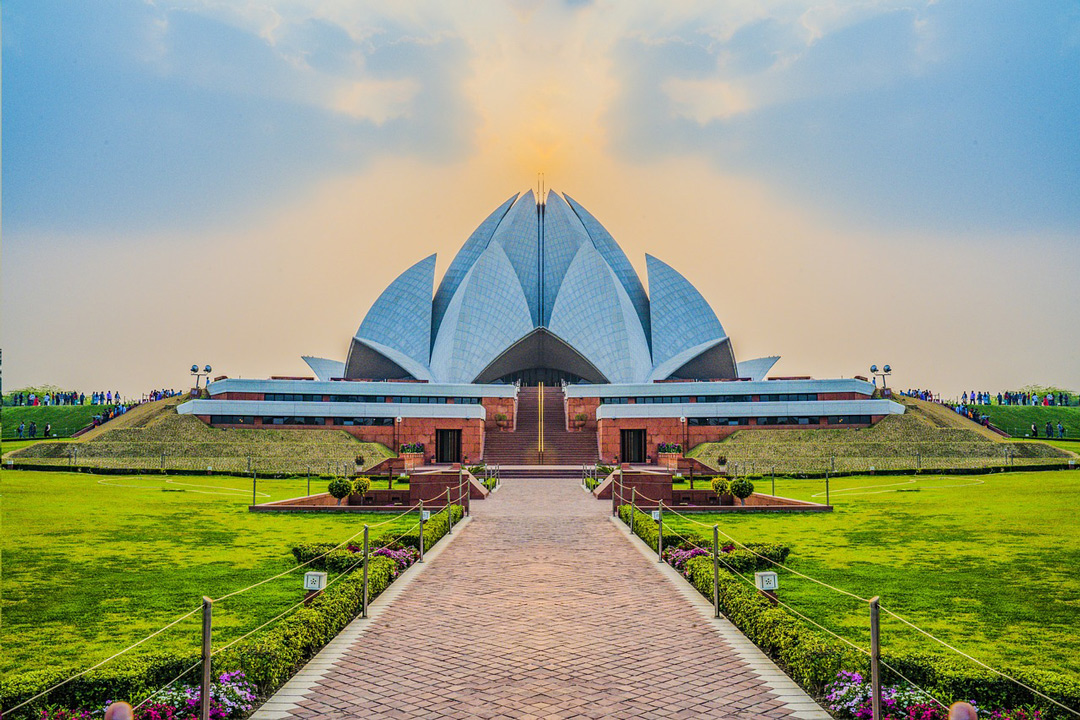
Dist: 469 km | Time: 11 to 13 hr | Altitude: 1500 m to 300 m
You will reach Delhi in the morning. After a long yet rewarding drive of approximately 10 to 16 hours, you will carry back unforgettable memories of the enchanting hill stations of Manali and Jibhi.
Meals: NA
Night: NA
| Location | Places to visit |
| Manali | Mall Road Manali, Old Manali Van Vihar, Club House, Old Manali, Solang Valley, Rohtang Pass, Jogini Waterfall (small trek), Vashisth Temple |
| Kullu and Kasol | Parvati River, Manikaran Temple and Gurudwara, Manikaran Hot Water springs. |
| Tirthan | Chhoie Waterfall, Tirthan Valley |
| Jibhi | Jibhi Valley, Jalori Pass, Raghupur Fort/Serolsar Lake (optional) |
Notes:
Add on Local Sightseeing
Notes:
We understand that plans can change, but the booking amount is non-refundable due to the costs we incur in preparing for your tour or activity. If you wish to reschedule for a different date, we'll adjust it to the same package, providing you with the necessary flexibility.
If you have paid the total amount but cancelled the package. You will be provided with a refund, as mentioned below:
Tours or activities may be cancelled due to unforeseen events beyond our control, weather conditions such as heavy rain or storms, or government restrictions like sudden closures of specific areas. In such a scenario, we will provide an alternate tour or activity. However, no refunds will be provided.
Manali is a high-altitude resort town in Himachal Pradesh, India. Named after the Hindu sage Manu, Manali is rich in legend and history. She is often called the “Valley of the Gods” because of its stunning scenery and historic temples, such as the renowned Manu Maharaj Temple. Nestled in the Beas River Valley at an altitude of around 2,050 meters, Manali serves as a gateway to Lahaul & Spiti and Leh, offering a range of experiences from serene temples and hot springs to adventure sports like skiing and paragliding in Solang Valley. The town’s scenic splendour includes snow-capped peaks, lush meadows, and verdant valleys. Manali’s charm extends through its festivals, such as the Nalwari and Phagli fairs, and its accessible wildlife sanctuary, adding to its appeal. With over 900+ hotels, Manali remains a popular destination year-round, attracting honeymooners, adventure enthusiasts, and families alike.
About Kasol
Kasol, a charming village in Himachal Pradesh’s Kullu district, is renowned for its beauty and vibrant atmosphere. Situated along the Parvati River and in the Parvati Valley, Kasol boasts lush green forests, clear waters, and rugged mountains, earning it the nickname “Amsterdam of India.” The village is popular among backpackers and nature enthusiasts for its relaxed vibe, vibrant café culture, and scenic trekking routes like the Kheerganga and Tosh Valley treks. Kasol also serves as a gateway to nearby attractions like Manikaran, known for its hot springs, and the picturesque village of Pulga. With a range of accommodation options, from basic guesthouses to upscale hotels and a variety of dining spots, including the well-known Evergreen Café, Kasol caters to a diverse crowd. The local markets offer unique handicrafts, and the area’s charm is enhanced by its laid-back ambience. Kasol is also noted for its sizeable Israeli community, contributing to its vibrant, international atmosphere.
About Jibhi
Jibhi, a quaint village in Himachal Pradesh’s Banjar Valley, is a hidden gem of the Himalayas. Renowned for its lush greenery, clear rivers, and traditional wooden architecture, Jibhi provides a perfect escape from city life. This charming destination features picturesque hiking trails, such as those leading to Jibhi Waterfall and Jalori Pass, and opportunities for fishing and riverside camping along the Tirthan River. The village is known for its eco-friendly practices and unspoiled beauty, with cosy homestays and ancient structures like Chaini Kothi enhancing its allure. Visitors can explore the nearby Great Himalayan National Park, indulge in apple orchards, and experience local culture in a tranquil environment largely untouched by commercialisation. Whether visiting in the pleasant summer or snow-covered winter, Jibhi offers a peaceful, offbeat experience with its scenic beauty, warm hospitality and rich biodiversity.
About Tirthan Valley
Tirthan Valley, located in Himachal Pradesh’s Kullu district, is celebrated for its serene beauty and environment, which is ideal for those seeking a peaceful retreat. Named after the Tirthan River, which originates from a sacred spring near Hanskund Peak and joins the Beas River at Larji, the valley is renowned for its rich natural environment, including the Great Himalayan National Park (GHNP). This UNESCO World Heritage site features diverse flora and fauna, with the Tirthan Valley area covering a significant portion of the park. Visitors can explore lush meadows, orchards, and traditional villages, engage in trekking, fishing, and stargazing activities, and enjoy the local culture and cuisine. The Tirthan Conservation and Tourism Development Association works to preserve the valley’s pristine condition by promoting sustainable tourism and protecting the local environment from commercial exploitation.
Places to visit in Manali
Manali offers a rich tapestry of attractions, including:
Hadimba Devi Temple: Ancient temple dedicated to Goddess Hadimba, surrounded by cedar forests.
Manali Bazaar: Vibrant market offering local handicrafts, souvenirs, and food.
Jogini Waterfall: Scenic waterfall located near Vashisht village, ideal for trekking.
Nehru Kund: Natural spring named after Jawaharlal Nehru, known for its clear waters.
Old Manali: Charming area with traditional Himachali architecture and lively cafes.
Manu Temple: Sacred temple dedicated to the sage Manu, set amidst scenic views.
Van Vihar National Park: Green space with serene walking paths and picnic spots.
Vashisth Temple: This historic temple is dedicated to sage Vashisth and is known for its hot springs.
Rohtang Pass: This high mountain pass offers breathtaking views and adventure activities.
Gulaba View Point: Scenic viewpoint on the way to Rohtang Pass, perfect for photography.
Patalsu Peak: Trekking peak offering panoramic views of the surrounding mountains.
Solang Valley: Popular destination for adventure sports like paragliding and skiing.
Tibetan Monastery: The monastery reflects Tibetan culture and offers peaceful surroundings.
Each provides unique experiences of the region’s natural beauty, cultural heritage, and adventure opportunities.
Places to visit in Kasol
Kasol is renowned for its stunning natural beauty and must-visit spots, including:
Nature Park Kasol: A serene park offering scenic views and relaxation.
Parvati Valley: A picturesque valley known for its natural beauty and vibrant culture.
Kasol Waterfall: A charming waterfall near Kasol, perfect for a refreshing visit.
Chalal Trek Trail: A scenic trail leading to the quaint village of Chalal.
Banjara Waterfall: A beautiful, lesser-known waterfall near Kasol.
Kasol Bridge: A bridge offering stunning views of the surrounding landscape.
Manikaran: Famous for its religious significance and hot water springs
Shiv Temple Manikaran: A revered temple dedicated to Lord Shiva.
Kheerganga Trek: A popular trek known for its hot springs and breathtaking views.
Parvati River: A pristine river flowing through Parvati Valley.
Chalal Village: A tranquil village known for its natural beauty and relaxed vibe.
Rasol: A remote village offering stunning views and a serene atmosphere.
Each offers a distinct way to experience the region’s natural beauty, cultural heritage, and adventure opportunities.
Places to visit in Jibhi and Thirthan Valley
Kulhi Katandi: Mini Thailand, or Kulhi Katandi/Veer Ki Aar, is a scenic spot in Jibhi, Tirthan Valley. Set amidst a dense forest of pine and deodar trees, it features a stream flowing through two large rocks, resembling a picturesque scene from Thailand. This serene natural gem offers a memorable escape from city life.
Great Himalayan National Park(GHNP): A UNESCO World Heritage Site, this park is celebrated for its rich biodiversity and breathtaking landscapes.
River Tirthan: Famous for its pristine waters and picturesque surroundings, it is a favourite destination for trout fishing and immersing oneself in nature.
Serolsar Lake: A serene high-altitude lake near Jalori Pass, surrounded by lush forests and beautiful hiking trails.
Chhoie Waterfall: A picturesque waterfall near the village of Jibhi, known for its tranquil setting and refreshing waters.
Jalori Pass: This mountain pass provides breathtaking views and access to Serolsar Lake. It’s a popular spot for trekking and scenic drives.
Budhi Nagin Temple: A revered Seraj Valley shrine dedicated to the serpent, Budhi Nagin. It’s an important religious site for locals.
Raghupur Fort: An ancient fort offering panoramic views of the surrounding valley. It’s a great spot for history enthusiasts and hikers.
Shringa Rishi Temple: Located in the Banjar Valley, this temple is dedicated to the sage Shringa Rishi and is an essential religious site in the region.
Gaidhar Waterfall: A lesser-known but stunning waterfall in the Tirthan Valley, offering a peaceful retreat and scenic beauty.
Shoja Village: A quaint village known for its natural beauty and tranquillity, offering picturesque views and a serene atmosphere.
Gushaini Village: A charming Tirthan Valley village known for its traditional houses and beautiful surroundings.
Chehni Kothi: A traditional architectural marvel in the Banjar Valley, known for its unique design and historical significance.
Ghalingcha Village: A small, picturesque village offering a glimpse into the traditional lifestyle of the region’s inhabitants.
Rolla: A scenic spot in the Tirthan Valley, pofamousor its lush green surroundings and tranquillity
Banjar: A picturesque town in the Seraj Valley, known for its scenic, beautiful traditional houses and as a base for exploring the surrounding areas.
Jibhi is a scenic village in the Tirthan Valley of Himachal Pradesh, India. Nestled in the Western Himalayas, it's known for its serene environment, lush green landscapes, and traditional wooden houses. Jibhi is an excellent spot for nature lovers, offering opportunities for trekking, camping, and enjoying the tranquillity of the Himalayas.
Tirthan Valley is located in the District Kullu of Himachal Pradesh, India. Nestled in the Western Himalayas along the Tirthan River, it is renowned for its scenic beauty, lush greenery, and serene environment. It is also close to the Great Himalayan National Park.
The main attractions in Jibhi include the beautiful Jibhi Waterfall, the serene Tirthan River, and the traditional wooden houses that add to the village's charm. Visitors can explore the nearby Great Himalayan National Park, trekking in the surrounding hills, and enjoy the picturesque landscapes. The town also offers opportunities for camping and trout fishing.
The best time to visit Jibhi and Tirthan Valley is from March to mid-July and September to March. During these months, the weather is pleasant, and the skies are clear, which is ideal for exploring the natural beauty and outdoor activities. Winter can be pretty cold, while the monsoon season may bring heavy rains, making travel less convenient.
Several accommodation options exist in Jibhi and Tirthan Valley, including guesthouses, homestays, and limited hotels. You can find a range of choices, from budget-friendly stays to more comfortable lodgings, providing a cosy base for exploring the region's scenic beauty.
Top things to do in Tirthan Valley include exploring the Great Himalayan National Park, trekking to spots like the Rakti Sar Lake, and enjoying riverside picnics along the Tirthan River. You can also visit the charming villages, go trout fishing, and experience the local culture and traditional architecture. Additionally, camping and hiking in the picturesque surroundings offer memorable experiences.
Top things to do in Tirthan Valley include trekking to the Great Himalayan National Park, crossing the Tirthan River, rock climbing, and fishing in the Tirthan River. Enjoy riverside camping, explore Serlosar Lake, and visit Chhoie Waterfall. Savour local cuisine, explore nearby villages, watch birds, and take forest walks. Additionally, you can shop for local crafts and souvenirs in the valley.
For a trip to Jibhi and Tirthan Valley, pack the following essentials:
Clothing: Comfortable, layered clothing for varying temperatures; warm clothes for evenings and higher altitudes; waterproof jacket for rain.
Footwear: Sturdy trekking shoes or hiking boots and comfortable walking shoes.
Outdoor Gear: Sun protection (hat, sunglasses, sunscreen) and a good quality backpack.
Camping Equipment: If camping, bring a tent, sleeping bag, and camping gear.
Personal Items: Basic toiletries, first aid kit, and necessary medications.
Documents: ID and permits for trekking if required.
Miscellaneous: Camera, power bank, and any special gear for activities like fishing or climbing.
Snowfall in Jibhi and Tirthan Valley during winter is guaranteed. These areas typically experience snow from late December to February. However, snowfall can vary each year depending on weather conditions. Visiting in January or February is recommended for the best chance of encountering snow.
Yes, accommodations are available in Jibhi and Tirthan Valley during winter. Both areas offer a range of options, from cosy guesthouses and homestays to more luxurious stays.
In winter, temperatures in Jibhi and Tirthan Valley can drop significantly. Here's a general idea:
Jibhi: Winter temperatures can range from around -2°C to 10°C
Tirthan Valley: Temperatures here can be slightly colder, ranging from -5°C to 10°C. It can also experience snowfall, making it a picturesque winter destination.
Travelling to Jibhi and Tirthan Valley in winter is generally safe, but you should be prepared for cold temperatures and potential snowfall. Check the weather and road conditions before your trip. Winter travel can be enjoyable and scenic.
Heavy rains may impact travel during the monsoon season, leading to potential road closures and landslides, especially in hilly areas. Flooding and reduced visibility can also affect travel conditions. Although there may not be formal travel restrictions, It's important to stay updated on local weather and road conditions and plan to ensure a safe trip.
In Jibhi and Tirthan Valley, you can enjoy various activities during winter. For Jibhi, explore snow-covered landscapes, indulge in peaceful nature walks, and experience the area's tranquillity. Tirthan Valley offers opportunities for snow trekking, visiting picturesque villages, and enjoying the serene beauty of the Tirthan River surrounded by snow. Both destinations are perfect for cosying up by a fireplace, enjoying local cuisine, and experiencing the calm of winter in the Himalayas.
The weather in Jibhi and Tirthan Valley varies significantly throughout the year. From March to June, pleasant temperatures with clear skies make it ideal for outdoor activities.
Monsoon season (July to September) brings heavy rainfall, leading to lush greenery and potential roadblocks and landslides.
October to February is winter, with temperatures dropping significantly. This often leads to snowfall, especially in higher elevations, creating a picturesque but cold environment.
It's important to check local weather conditions before travelling during winter or monsoon seasons.
During winter, temperatures in Jibhi and Tirthan Valley can drop significantly. In Jibhi, temperatures typically range from -2°C to 9°C (28°F to 47°F). In Tirthan Valley, it can be slightly colder, with temperatures ranging from -5°C to 5°C (23°F to 41°F). Snowfall is common in these areas during the peak winter months.
During winter, Jibhi and Tirthan Valley experience cold temperatures, often ranging from -5°C to 9°C (23°F to 46°F). Jibhi typically has temperatures between -2°C to 9°C (28°F to 46°F), while Tirthan Valley can be slightly colder. Both areas frequently see snowfall, creating a picturesque winter landscape. Be prepared for chilly conditions and pack accordingly if you visit during this season.
You can visit Jibhi and Tirthan Valley during the monsoon season, but be ready for heavy rainfall. The monsoon brings lush greenery and a tranquil atmosphere but also increases the risk of landslides and road blockages, particularly in hilly areas. It's essential to check weather conditions and travel advisories before your trip.
Yes, there is mobile network coverage in Jibhi and Tirthan Valley. However, signal strength can vary depending on the location and service provider. While most areas have decent connectivity, some remote spots might experience weaker signals.
The distance between Jibhi and Tirthan Valley is approximately 40 to 50 kilometres (18 to 25 miles) by road. Depending on road conditions and traffic, the drive usually takes between 1 and 2 hours.
A typical Jibhi Tirthan Valley tour package may include:
|
Package |
Price |
Book |
|
3 Days, 2 Nights |
₹6000 to ₹7000 |
|
|
4 Days, 3 Nights |
₹7000 to ₹9000 |
Jibhi is a picturesque village in the Tirthan Valley in Himachal Pradesh, India. It lies along the Tirthan River, surrounded by lush green forests and majestic mountains. Jibhi is a popular base for exploring the scenic beauty and outdoor activities of the Tirthan Valley.
In Jibhi and Tirthan Valley, notable tourist spots include Jibhi Waterfall, a serene place surrounded by lush greenery, and the ancient Bhasheshwar Temple. Highlights of the Tirthan Valley include the Great Himalayan National Park(GHNP), known for its rich biodiversity, and the Tirthan River, ideal for fishing and river rafting. Sarchi Village and Chehni Kothi are famous for their traditional architecture and stunning views. Both areas offer beautiful landscapes and opportunities for outdoor activities.
To travel from Delhi to Jibhi and Tirthan Valley, you can drive approximately 550 kilometres (340 miles), which takes around 12-14 hours. Alternatively, take a Volvo bus from Delhi to Manali or Shimla and then hire a taxi to Jibhi and Tirthan Valley, with the bus journey taking about 12-14 hours and the taxi ride an additional 2-4 hours. Another option is to take a train to Ambala or Chandigarh and then continue by taxi, with a total travel time of around 12-16 hours.
The weather in Jibhi and Tirthan Valley varies throughout the year. In summer (March to June), temperatures are pleasant and mild. During the monsoon season (July to September), expect heavy rainfall, lush greenery, and potential road disruptions. Winter (October to February) brings cold temperatures, with Jibhi ranging from -2°C to 8°C (28°F to 46°F) and Tirthan Valley often colder, between -5°C and five °C (23°F to 41°F), along with possible snowfall.
A suggested itinerary for Jibhi and Tirthan Valley might include:
Day 1: Depart from Delhi to Manali by Volvo Bus or cab (10-16 hours).
Meals: Nil.
Day 2: Arrive in Manali, check in, and visit Mall Road, Hadimba Temple, Van Vihar, Old Manali, and the clubhouse.
Meals: Dinner. Stay in Manali.
Day 3: Visit Solang Valley for adventure activities, then see Vashisht Temple and Jogini Waterfall.
Meals: Breakfast, Dinner. Stay in Manali.
Day 4: Explore Manali and local markets before departing for Kasol in the evening.
Meals: Breakfast, Dinner. Stay in Kasol.
Day 5: Drive to Jibhi, check in, and visit Chhoie and Bathod Waterfalls.
Meals: Breakfast, Dinner. Stay in Jibhi/Tirthan.
Day 6: Explore Jibhi Valley and Jalori Pass, then head back to Delhi in the afternoon.
Meals: Breakfast.
Day 7: Arrive in Delhi in the morning.
Adjust the days based on your interests and the time available.
The best time to visit Manali, Kasol, Jibhi, and Tirthan Valley is from March to June and September to November. During these periods, the weather is ideal for outdoor activities. Summer offers clear skies, while autumn provides beautiful landscapes and fewer crowds. Winter (December to February) brings snow and cold temperatures, making it perfect for snow lovers, though some areas may be less accessible. Monsoon season (July to August) can bring heavy rainfall, potentially leading to roadblocks and landslides.
|
Package |
Price |
Book |
|---|---|---|
|
4 Night 5 Days |
₹11,000 to ₹12,000 |
|
|
5 Night 6 Days |
₹14,000 to ₹16,000 |
Yes, Uncia Trails offers tour packages for Manali, Kasol, and Jibhi from Delhi. Their packages typically include transportation, accommodation, and some sightseeing options. If interested, please contact them directly for the latest details and customise the package according to your preferences.
The cost for a trip to Manali, Kasol, Jibhi, and Tirthan from Delhi by road starts at ₹11,000 for four nights and five days, depending on your category and the number of days. You can contact Uncia Trails to book your tour and customise the package to suit your preferences.
The cost for this trip starts from ₹11,000 for four nights and five days, depending on your category and the number of days. Contact Uncia Trails to book and customise your tour.
Yes, there are tour packages for couples to Manali, Kasol, Jibhi, and Tirthan. You can book your tour with Uncia Trails and customise the package to suit your preferences.
Leave a review